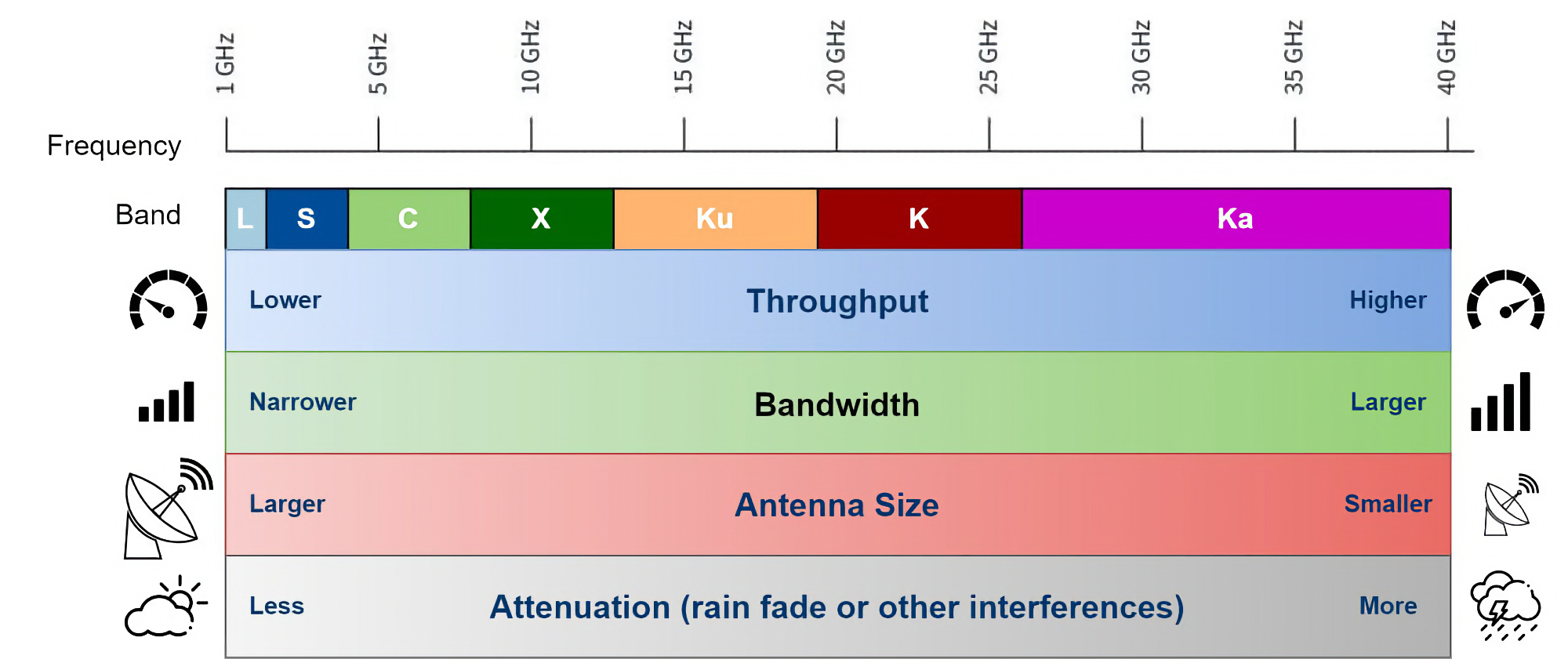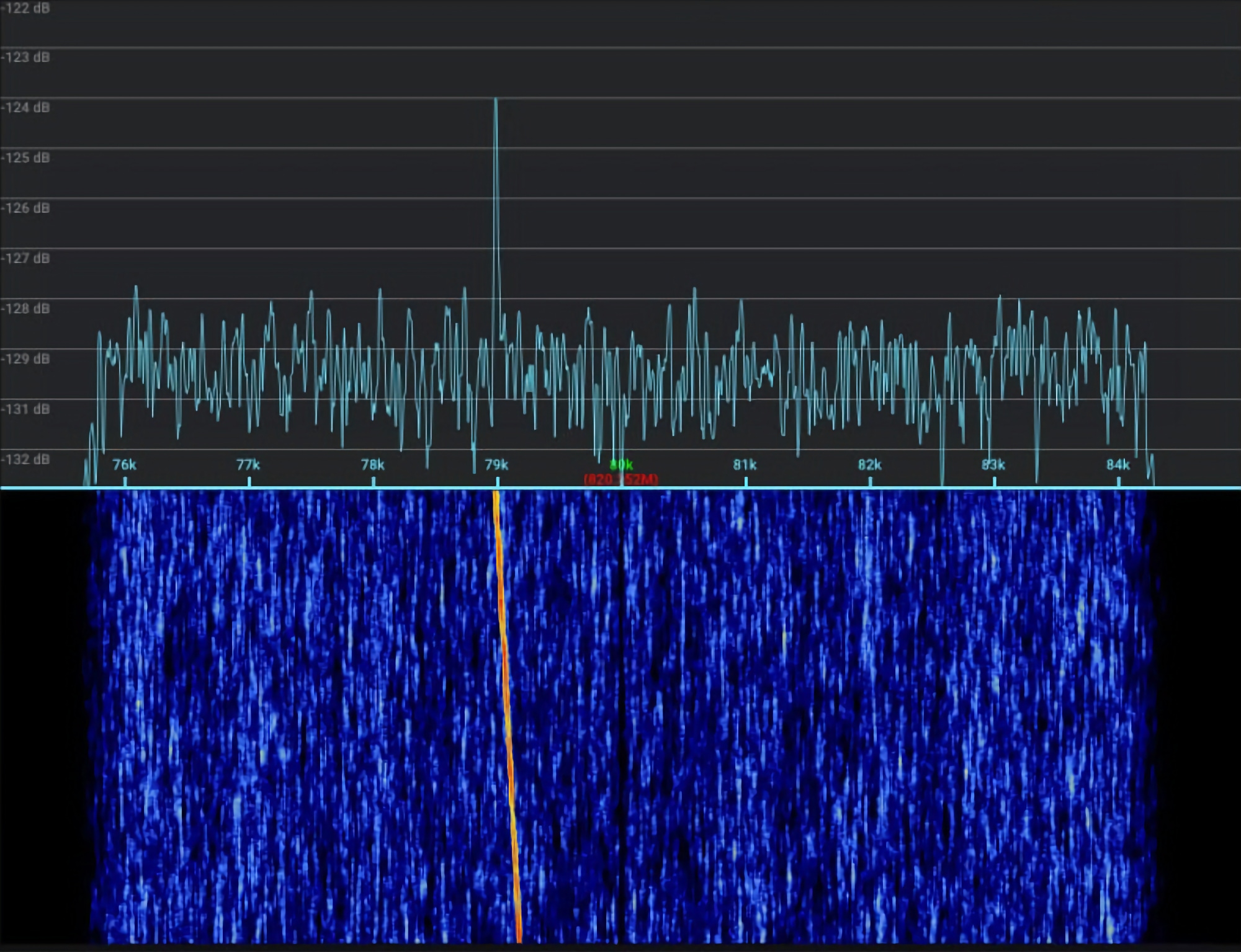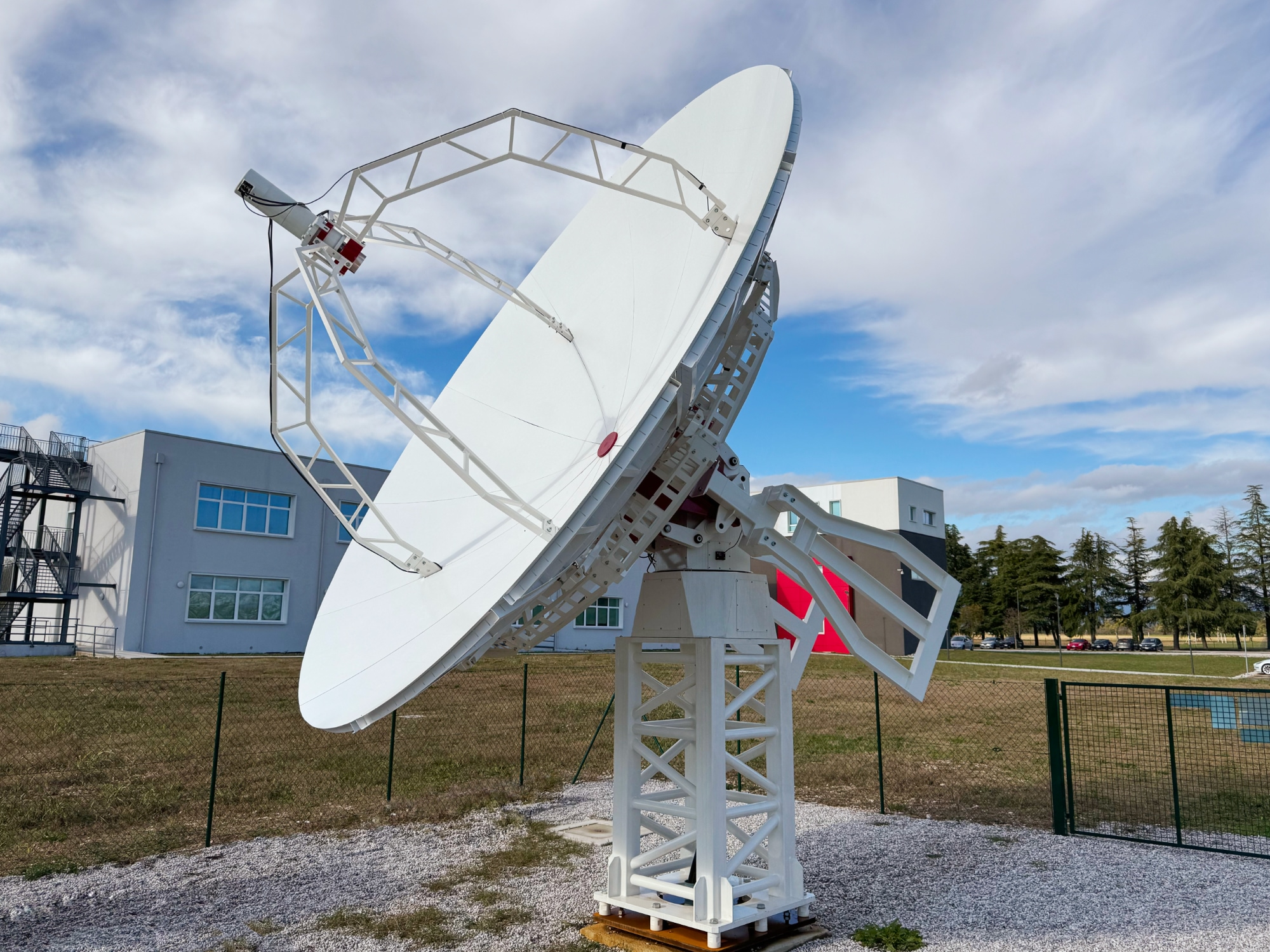In space communication is essential to choose the right frequencies for your purposes, ensuring efficient and reliable data transmission. Let’s see what the key frequency bands are and their significance in space applications. Frequency spectrum has different bands designated for various purposes. These bands are allocated based on factors such as propagation characteristics, interference, and regulatory considerations. Recently optical frequencies within the visible spectrum are also beginning to be used in space communication, by using a laser directed from the source to the target and allowing for transmission of more information. However communication can only be conducted point-to-point, precise pointing is essential to establish communication (as the laser beam is very narrow), and they are more sensitive to atmospheric conditions. When satellite communication is carried out in the radiofrequency (RF), it ranges from 30 MHz to 40 GHz and this range is in turn divided into bands:

What radio frequencies are used for space communication?
- VHF band: operating in the range of 30 to 300 MHz, VHF signals have relatively longer wavelengths compared to higher frequency bands, making them suitable for relatively short-range communications in space (LEO missions) and offering good propagation properties for inter-satellite links and communications with ground stations.
- UHF band: from 300 MHz to 3 GHz, UHF bands facilitate data transmission between spacecraft and ground stations, ensuring reliable and efficient communication due to their ability to penetrate the ionosphere and effectively transmit information over longer distances. UHF signals have shorter wavelengths than VHF, enabling them to carry more data and travel more line-of-sight distances.
- L-band: from 1 to 2 GHz, used for mobile services, satellite navigation (GPS, Galileo, GLONASS), telecommunication (Iridium, Inmarsat), aircraft surveillance, amateur radio, broadcasting, and radio astronomy. This band is known for its ability to penetrate the atmosphere and overcome obstacles as heavy rain or fog, making it suitable for reliable communication in adverse weather conditions. Due to this capability, the L band is often used for critical services such as emergency communications and safety applications.
- S-Band: from 2 to 4 GHz, is commonly used for telemetry, tracking, and control (TT&C) of satellites. It is also used for weather radar, radio navigation systems, and space research. This band provides a balance between data rates and atmospheric penetration, making it suitable for various communication and monitoring functions.
- C-Band: this band operates in the range of 4 to 8 GHz. It has been a staple for satellite communication since the early days of space exploration. The C band is known for its ability to penetrate rain, snow, and other atmospheric conditions, making it highly reliable for earth-to-space communication.
- X-Band: from 8 to 12 GHz, it offers higher data rates and greater accuracy, making it valuable for radar communications and certain space-based scientific instruments. It is less susceptible to rain attenuation than K bands, making it suitable for more precise targeting high-priority missions.
- Ku-Band: from 12 to 18 GHz and is widely used for high-powered satellite communication, including television broadcasting and broadband internet. It offers greater bandwidth than lower frequencies bands, enabling the transmission of large amounts of data.
- Ka-Band: from 26.5 to 40 GHz, is situated in the upper part of the microwave spectrum. It provides an even larger bandwidth, which is ideal for data-intensive applications like high-speed internet services and high-definition satellite television.

What radio frequencies are used for space communication? Radio signal from Mars Express in X band (8420.4 MHz), acquired with INTREPID 500-12 ground station.
The frequency chosen influences various aspects of the communication system. One of these is the data rate, the quantity of data per unit of time that is transferred between the satellite and the ground station (measured in bits per second, bps): higher frequencies typically allow for higher data transmission rates due to their ability to carry more signal cycles within a given time frame. Higher frequencies often provide larger bandwidth capabilities, allowing for the transmission of a wider range of frequencies and, thus, the transfer of more data simultaneously. Furthermore, higher frequencies have shorter wavelengths, meaning more cycles within a specific time and the transmission of more bits per second. They also allow more complex modulation schemes to encode multiple bits at a time. The lower the frequency you choose the more you have no interest in fast data transmission. The VHF and UHF bands are the minimum frequencies for space communication, used to transfer little data into low Earth orbit (LEO); if there is a need to transfer large amounts of data into Earth orbit, then the S and X bands are usually adopted. Ku and X bands are typically used for interplanetary communications.
The S and X bands are significant for specific applications, since they share some important characteristics: both S and X bands are often used for point-to-point communication and to fulfil specialized needs, although they are more sensitive to attenuations compared to lower frequency bands. Indeed, the sensitivity to atmospheric conditions at higher frequencies is primarily due to the absorption and scattering of electromagnetic waves by molecules in the atmosphere.

What radio frequencies are used for space communication? INTREPID 500-12 ground station with 5 meter diameter full dish antenna and X/S bands feed.
INTREPID ground station antenna systems for space communication
If you are looking to own a ground segment for radio frequency space communications, you should choose the INTREPID ground station antenna systems that are designed with different antenna dimensions and for various radio bands. If you want to know more about our INTREPID ground station antenna systems, you can click here and discover all the available models. In order to allow everyone start his project, PrimaLuceLab also offers design, shipment, installation and training services: we can support you from design to shipment, from installation to on-site training.
